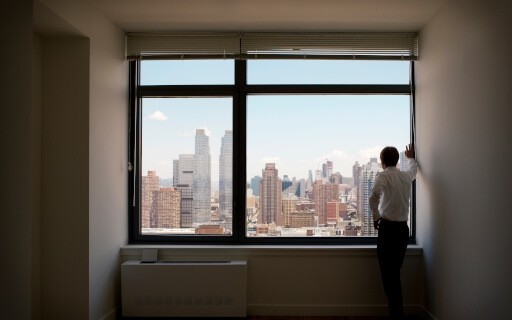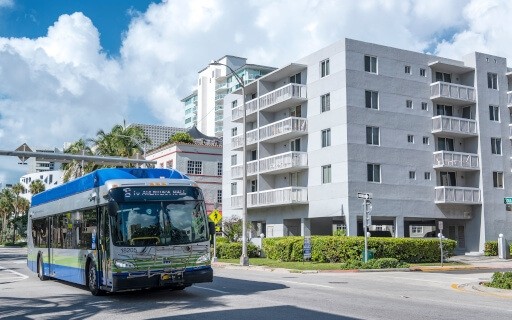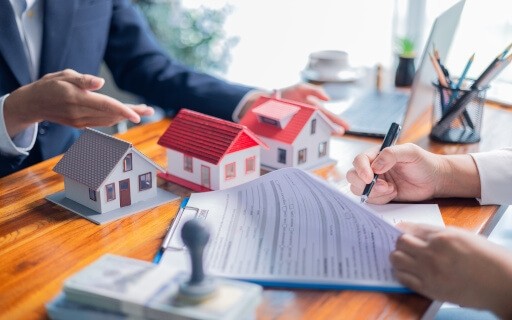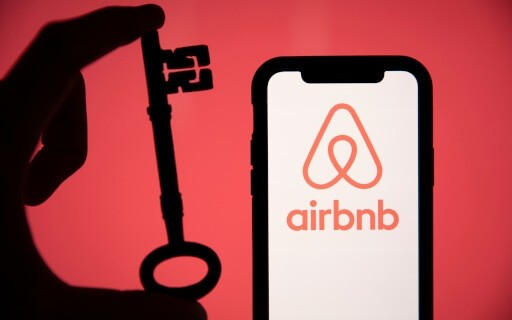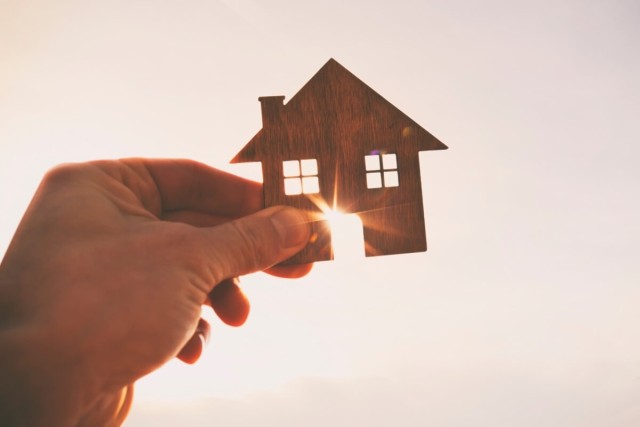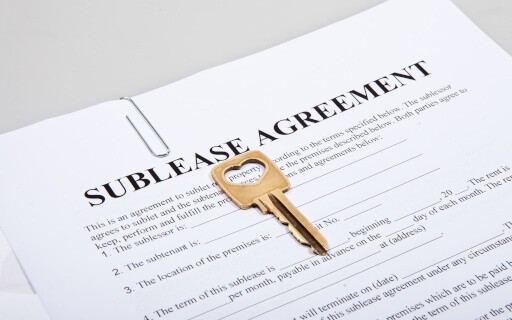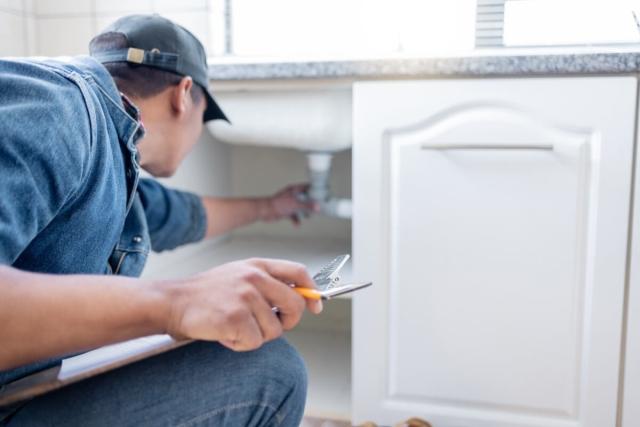
Like a sports car or string instrument, rental properties require some fine-tuning. From tightening doorknobs to replacing air filters, all properties – regardless of age or condition – need some TLC to withstand gradual wear and tear. This is where a property maintenance schedule comes in.
Establishing a maintenance schedule is the best way to stay on top of repairs and maintain your property’s condition. By outlining important tasks and creating a timeline for their completion, you can ensure that your property remains safe, functional, and appealing for both current and future tenants.
In this article, we’ll share our tips and tricks for creating an effective maintenance schedule. From tackling emergency repairs to scheduling seasonal upkeep, here’s a look at what we’ll cover:
- Why regular property maintenance is important
- Different types of rental property maintenance
- How to create a maintenance schedule for a rental property
- Common challenges of rental property maintenance
- How Apartments.com can help with property maintenance
Why Is Regular Property Maintenance Important?
Regular property maintenance is crucial to a landlord’s success. Think of a gardener routinely watering flowers or a musician tuning their instrument. Neither of these individuals would see success if they didn’t consistently tend to their craft. This same principle applies to landlords and their property investments.
If those analogies don’t quite drive the point home, here are some straightforward reasons why maintaining your property is vital to the success of your rental business:
Property longevity
Rental properties are long-term investments. When you buy a property, the idea is that its value will increase over time. However, without proper care and maintenance, this is a lot less likely.
Adhering to a regular maintenance schedule not only extends the life of your property but also boosts your return on investment. For instance, routine checks for leaks and water damage can prevent costly issues like mold growth or structural deterioration. Addressing these problems early or, better yet, preventing them altogether ensures your property retains its value and continues to generate long-term profits.
Legal compliance
As a landlord, it’s your job to provide a safe and habitable living environment for tenants. However, this isn’t easy to do without proper rental upkeep. Routinely checking a home’s structural necessities, like plumbing, electricity, and HVAC, ensures tenants are not at risk of danger or inconvenience. For instance, replacing your smoke detector’s batteries or repairing a leaky faucet are simple tasks that can make a big difference in safety and habitability.
Tenant satisfaction and retention
Regular maintenance plays a big role in tenant retention. If your property remains a safe and comfortable place to live, current occupants will likely stick around and save you from the stress of tenant turnover. However, if tenants face recurring maintenance issues and delayed response times, they’ll likely look elsewhere for the next lease term.
If you want your tenants to stick around, stay on top of maintenance and create a system for addressing repair requests. When a tenant reports an issue, respond to them politely and promptly. Keep them updated on the status of repairs and always follow up. Doing so will showcase your care for their and the property’s well-being.
What Are the Different Types of Rental Property Maintenance?
There are four different types of rental property maintenance, each with its own purpose, urgency, and importance. Understanding and differentiating each type is critical to forming an effective maintenance schedule. Here’s a breakdown of each type:
Seasonal
Seasonal maintenance takes place during seasonal transitions. Think tuning up your air conditioning before summer temps hit or conducting pest control as spring critters reemerge. These kinds of tasks are critical during seasonal transitions and will ensure your home withstands weather changes, temperature spikes, and the increased use of certain amenities during that time of year (i.e., pools in the summer or fireplaces in the winter).
Preventative
Preventative maintenance means getting ahead of issues or addressing them in their earliest stages. For example, rather than waiting for a clogged pipe or leak to get your attention, you could instead conduct regular plumbing inspections and cleaning. Doing so will save you from future costly repairs and ensure your plumbing is in top condition year-round. Plus, you’ll avoid disrupting tenants with emergency repairs and inconveniences, providing a more comfortable and satisfactory living experience.
Routine
Routine maintenance is similar to preventative maintenance. However, it focuses more on general inspection and cleaning than targeted areas or systems. Think landscape touch-ups, repainting, and general cleaning. These tasks may seem small, but they’re crucial in maintaining your property’s overall value and condition.
Emergency
Emergency repairs are what you’re trying to prevent with the maintenance listed above. However, they’re sometimes unavoidable. Whether it’s as serious as a dishwasher leak or as simple as a loose doorknob, unexpected repairs can emerge at any time, even with a robust maintenance schedule in place.
No matter how big or small the emergency repair is, it’s important to address it promptly. This requires clear communication with your tenant and a set-aside budget for maintenance curveballs. It also may be helpful to have a trusted handyman or contractor on speed dial for these types of situations.
Creating a Maintenance Schedule for a Rental Property
Now that we’ve discussed each type of maintenance, let’s start building your schedule. Typically, this starts with creating a property maintenance checklist. By outlining and prioritizing each task in a checklist, you can create a clear timeline for maintenance completion. Then, you’ll have the core foundation for your property maintenance schedule.
Routine maintenance checklist
Earlier, we discussed routine maintenance and its role in property appeal and value. To ensure comprehensive and correct routine maintenance, here’s a checklist outlining each task and its frequency:
Every month
- Smoke detectors/carbon monoxide detectors: Test all smoke and carbon monoxide detectors to ensure they work properly. If necessary, replace the batteries and clean the devices with a dry cloth to remove dust.
- HVAC filter: Check and replace your HVAC filter if it looks dirty or clogged. A clean filter improves air quality and ensures your system runs efficiently.
- Lighting: Inspect all lightbulbs indoors and outdoors. Replace any burnt-out bulbs and check for flickering lights, which might signal electrical issues.
- Doors and windows: Examine doors and windows for drafts, damage, or broken seals. Apply weatherstripping or caulk to fix any air leaks and ensure proper insulation.
Every three months
- Clean HVAC system: Clean around your HVAC unit to keep it free from dust, debris, or obstructions. Schedule a maintenance check if needed to ensure it’s running smoothly.
- Check major appliances: Inspect appliances like refrigerators, ovens, washers, and dryers for proper functioning. Clean coils, check for leaks, and look for unusual noise or wear.
Every six months
- Pest control: Inspect your home for signs of pests like droppings, nests, or damage. Apply preventive pest control measures or hire a professional if necessary.
- Plumbing: Check for leaks under sinks, around toilets, or in exposed pipes. Test water pressure and ensure drains are clear. Address any leaks or blockages promptly.
- Vents and ducts: Clean air vents and ducts to remove dust buildup. Ensure they aren’t blocked and are distributing air properly. This is especially important for ventilation efficiency.
Every year
- Roof inspection: Inspect your roof for missing shingles, leaks, or damage caused by weather. Clean out gutters and downspouts to prevent water buildup.
- Water heaters: Flush your water heater to remove sediment and improve efficiency. Check the temperature and inspect for signs of leaks or corrosion.
- Electrical: Test all outlets and switches for proper function. Inspect your breaker panel and hire an electrician to check for wiring issues.
- Exterior cleaning/inspection: Power wash siding, clean windows, and check for any visible cracks, peeling paint, or damage to the exterior. Repair where needed to maintain curb appeal and prevent further wear.
- Test fire extinguishers: Inspect fire extinguishers to ensure they are in good condition and have not expired. Verify that the pressure gauge shows the correct level and that they are easily accessible in case of an emergency.
Seasonal maintenance checklist
Seasonal maintenance, as we mentioned, aligns with seasonal transitions. Therefore, you can expect to conduct these maintenance tasks about every three months.
Tasks may vary depending on your area’s climate, but you can generally expect to see the following items on your seasonal maintenance checklist:
Spring
Exterior:
- Clean pollen off exteriors: deck, windows, doors, etc.
- Fertilize lawn
- Prune trees and shrubs
- Schedule septic system inspection
- Remove corrosion from outdoor faucets
- Check the sprinkler system
- Inspect roofing
- Replace caulking and weather stripping around windows and doors
Interior:
- Remove mineral deposits from faucet aerators and showerheads
- Replace AC filter
- Dust light fixtures
- Replace batteries in smoke and carbon monoxide detectors
- Inspect sinks, showers, and bathtubs for deterioration
- Clean dryer vent
- Schedule maintenance for the AC system
- Drain or flush the water heater
Summer
Exterior:
- Clean outdoor amenities like pools, grills, and patios
- Power wash siding and windows to remove dirt and grime
- Examine and clean gutters and downspouts
- Check for cracks in the driveway or walkways and seal them
- Trim trees and shrubs to prevent overgrowth
Interior:
- Remove lint from the dryer vents
- Check appliances for water leaks
- Replace faucet and showerhead washers
- Seal tile grout
- Clean kitchen exhaust fan filter
- Clean refrigerator and freezer coils
Fall
Exterior:
- Rake leaves and touch up landscaping
- Clean leaves/debris from gutters and downspouts
- Winterize exterior plumbing, including hoses and sprinkler systems
- Seal any cracks/gaps in windows or doors
- Inspect the roof for missing, loose, or damaged shingles
Interior:
- Schedule HVAC inspection for the heating system
- Clean fireplace
- Replace batteries in smoke and carbon monoxide detectors
- Clean carpets
- Check water heater
- Clean dryer vent
Winter
Exterior:
- Cover AC unit
- Inspect roof, gutters, and downspouts for any weather damage
- Collect sidewalk salt and ice melt in case of harsh winter weather
Interior:
- Clean out the bathroom exhaust fan grill
- Clean drains in bathrooms and kitchen
- Check/seal any air leaks
Common Challenges of Rental Property Maintenance
Property maintenance comes with a unique set of challenges. Whether you’re a first-time landlord or a veteran, always prepare for the following obstacles when planning your property maintenance schedule:
Budgeting for repairs
Budgeting is one of the hardest parts of property maintenance. Going into it, most landlords set aside a certain amount for preventative and routine tasks. However, if an issue arises unexpectedly, it can throw off this budget and leave you with a hefty repair bill.
The best way to combat this issue is to designate a fund for emergency repairs. This way, you won’t have to dip into your regular maintenance budget and can stick to your financial plan. Additionally, continue conducting preventative maintenance tasks to lessen the risk of these costly repairs.
Communicating with tenants
Tenant communication can present challenges when conducting maintenance. Whether it be scheduling conflicts, delayed responses, or simply differing expectations, there’s so much risk for miscommunication when scheduling repairs.
To prevent misunderstandings with tenants, make sure to establish a clear method of communication. Whether through phone calls, emails, or text messages, ensure that both parties have a direct way to reach one another. Additionally, keep tenants in the loop when it comes to property repairs. If a contractor is coming by, alert the tenants and ensure the visit doesn’t conflict with their schedule. Doing so will ensure clear communication and maintain a positive tenant-landlord relationship.
Hiring professionals
The last hurdle you might face involves hiring professionals. While some tasks you can DIY, any system tune-ups or repairs, such as HVAC or electricity needs, should be done by professionals. However, sometimes it’s hard to find someone reliable.
If you struggle to find reputable maintenance personnel, try asking for recommendations around the neighborhood. Research online and read reviews from previous customers. And before officially hiring anyone, make sure to verify their licensing and credentials. It’s always better to take the time to find a trustworthy professional rather than risk poor work or potential damage to your property.
Stay on Top of Maintenance with Apartments.com
Being a landlord means keeping up with property maintenance -- every season, rain or shine. Though sometimes overwhelming, maintaining a maintenance schedule is crucial for long-term success. From retaining tenants to increasing property value, regular maintenance offers endless benefits for your rental business, ensuring longevity, profitability, and peace of mind.
If you need help keeping track of property maintenance, put your trust in Apartments.com. Our suite of Rental Tools offers valuable resources, including maintenance request dashboards, expense tracking tools, and more, to streamline the maintenance process and keep your property in top condition. With our tools, you can stop stressing about repairs and focus on what matters most: growing your rental business.
FAQs
What are the maintenance expenses for a rental property?
Maintenance expenses can include repairs, landscaping, cleaning, pest control, and routine upkeep like HVAC servicing or plumbing fixes. Costs vary depending on the property’s size, age, and location.
What maintenance is required by a tenant?
Tenants are typically responsible for basic upkeep, such as keeping the property clean, taking out trash, and replacing light bulbs. Lease agreements may specify additional responsibilities.
How much do landlords pay for maintenance?
Landlords usually spend 1-2% of the property’s value annually on maintenance. Costs can increase for older properties or unexpected repairs.


